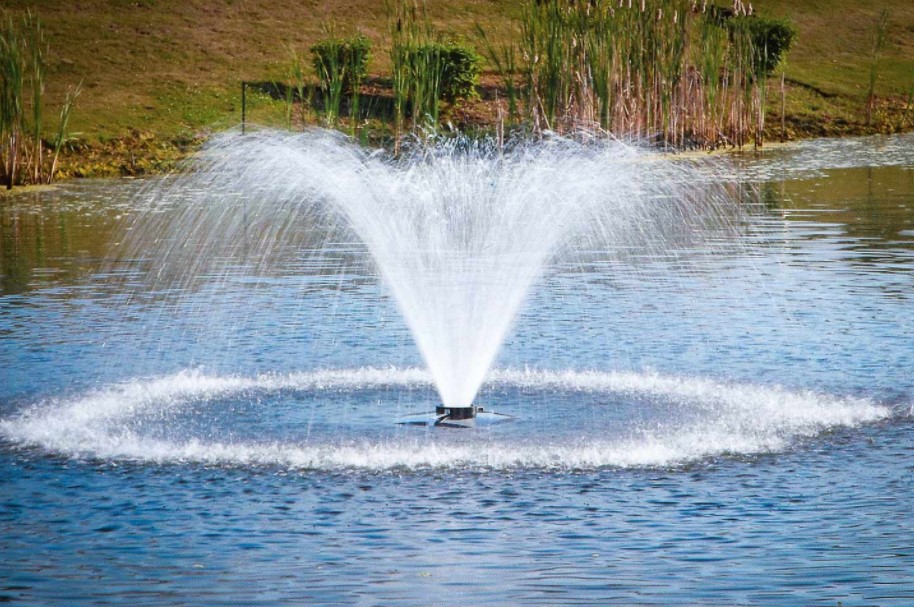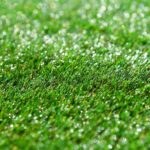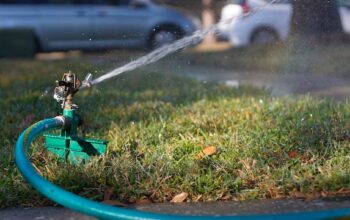An aerator is one of the most interesting and visually appealing types of outdoor water features. It is a device that shoots out water from a waterbody, whether natural or man-made, such as a lake, pond, or pool. However, an aerator is more than just a visual attraction. Apart from acting like a water fountain, an aerator serves an important purpose in maintaining the proper aquatic ecosystem of the waterbody.
Why aerators are vital
Waterbodies such as lakes and ponds naturally take in oxygen from many sources, primarily from the plants and trees surrounding it as well as from the atmosphere itself. This dissolved oxygen is needed by the organisms and creatures existing in the waterbody—from the microscopic creatures responsible for natural processes like decomposition, to larger animals such as fish or amphibians.
The levels of dissolved oxygen in the waterbody depend on the condition of the environment surrounding it. The supply of oxygen to the waterbody is affected by stresses and activities around it, such as people competing for oxygen, pollution, and other factors. An aeration delivery system for the waterbody is important in order to help balance the ecosystem and keep it healthy. It helps prevent the overgrowth of algae, bad odors, and other undesirable conditions.
How to aerate waterbodies
In order to find out how best to deliver additional oxygen to a waterbody through aeration, there are a number of factors to consider. First and foremost, you need to look at the size of the waterbody, as well as its average and maximum water depth. The shape of the waterbody and the quality of the water are also important to consider. These would help you determine the demand for oxygen by the waterbody.
In terms of the type of aeration system to bring in, you need to consider the waterbody’s proximity to electrical or power sources. In terms of aesthetics, what kind of environment or atmosphere are you seeking to create? Are there considerations toward the level of noise or activity in the area? These are things you need to keep in mind in coming up with the perfect aeration solution for your waterbody.
Types of aeration systems
A bottom-diffused aeration system is one of the most common and effective types used, especially for deep waterbodies. A compressor on land pushes air along weighted tubes strategically positioned at the bottom of the waterbody. This helps bring the water from the bottom, which usually possesses less dissolved oxygen, up to the surface to be oxygenated. For shallower waterbodies—those less than four feet deep—a surface spray or fountain-style aerator is more ideal. It helps bring oxygen from the atmosphere down into the water column.
Choosing the right aeration system
No two waterbodies are definitely alike, and there is no one aeration solution that would be perfect for both. For instance, a small, shallow pond would require a different approach in aeration as compared to a larger, wider lake with deeper depths. Each would have their own needs in terms of dissolved oxygen for proper balance of their respective aquatic ecosystems.
It is recommended that you seek the help of a professional in developing the right aeration solution for your property. A bathymetric study is usually conducted in order to get the necessary information in designing the proper aeration system for a specific waterbody. Dealing with natural elements requires exact science and the right sustainable approach for the benefit of the entire natural environment surrounding the waterbody. Remember that a poorly designed or inappropriate aeration system would be more detrimental to your waterbody than having none at all.
Related Posts

Loves home. I am here to provide how to make your home a much better place. 🙂 Blogging about HomeDecor, Home Improvements and more.











